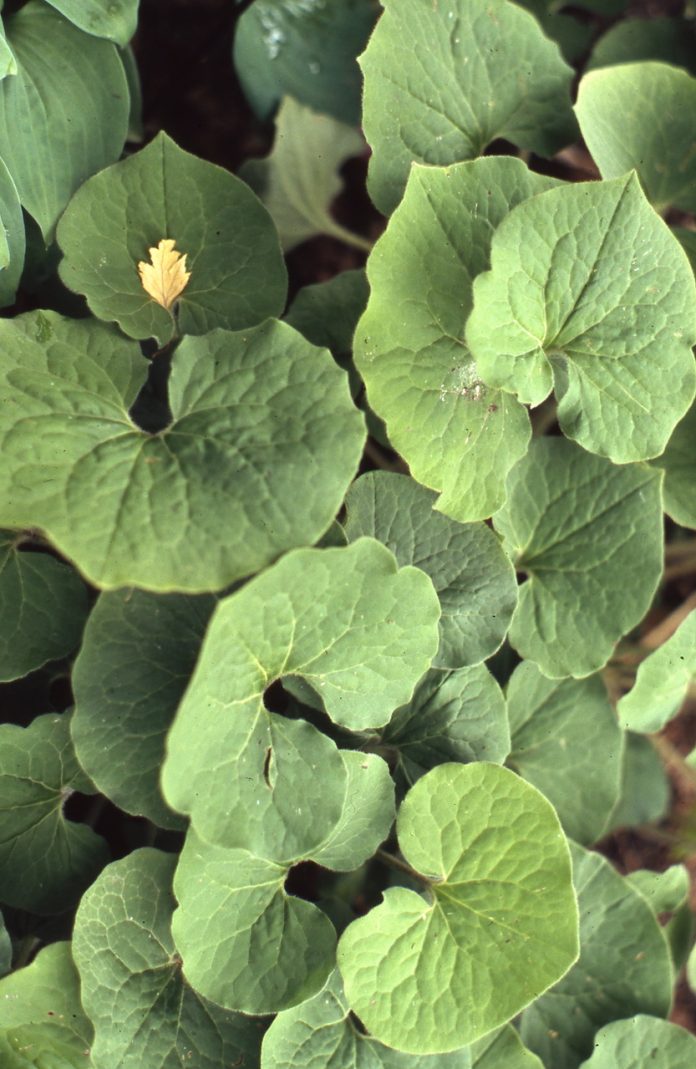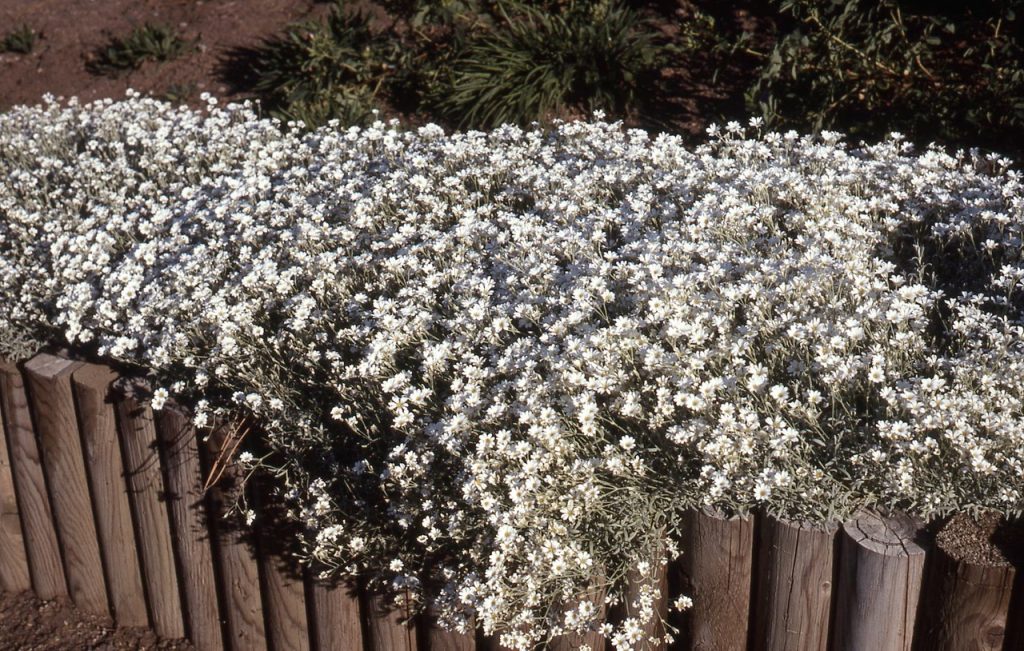
Sara Williams
All of the following perennials are attractive, fairly low growing, hardy and can serve multiple functions in our prairie gardens. They can edge a border or path, are at home in a rock garden, and, given time, can act as groundcovers in “difficult” areas.
Bearberry (Arctostaphtlos uva-ursi) has a challenging botanical name but is easy to grow. A short (10 cm/4 in.) broadleaf evergreen, native to the polar regions of the Northern Hemisphere, it produces small, pale pink, downward-facing urn-shaped flowers followed by bright red edible berries (loved by bears as well). Place it in full sun to partial shade in average well drained soil.
Canadian ginger (Asarum canadense) is similar in height as bearberry, but is characterized by a steadily increasing mound of attractive, soft, light green, kidney-shaped foliage which mostly hide the small brown flowers produced in spring. The common name is derived from the ginger-like smell of the roots. It’s native from New Brunswick to Manitoba and south to South Carolina. The foliage can cause dermatitis in sensitive individuals. Best to wear gloves and deal with it in the cool of the morning. It does well in evenly moist, well-drained soil rich in organic matter.
Perennial alyssum, basket of gold (Aurinia saxatilis) was one of the very first perennials I grew from seed. It’s long lived, low maintenance, and produces dainty mounds of bright yellow flowers that practically hide the grey-dusted green foliage for about 6 weeks from late spring to early summer. An alpine plant native to Europe of 22-30 cm (9-12 in.), it’s very versatile in our landscapes. Place it in full sun on well-drained soil. For a neater appearance, it may be lightly sheared after flowering.
Snow-in-summer (Cerastium tomentosum) is perhaps not a very marketable name after such a long winter! It’s characterized by masses of pure white flowers over low woolly silver foliage. Only 15-30 cm (6-12 in.) high, it is long lived and blooms for 4-6 weeks from late spring to early summer. Very drought-tolerant once established, it should be grown in full sun on well-drained soil.

Blue fescue (Festuca glauca) is a lovely blue ornamental grass of only 10 to 20 cm (4-8 in.). The variety ‘Skinner’s Blue’ is one of the hardiest for the prairies. Its biochemistry is unique in that an chemical is released by its roots inhibits the germination of seeds above its root space. This results in less competition from other plants for space, sunlight, nutrients and moisture. And from the gardener’s perspective, little or no weeding. Place it in full sunlight on well-drained soil.
Siberian avens (Geum urbanum) produces bright, orange-red, five-petaled flowers on erect stems from late spring to early summer. The bright green, pinnately compound foliage is attractive throughout the growing season. Native to Europe and western Asia, it was considered a medicinal herb throughout the Middle Ages. Place it in full sun to partial shade on average well drained soil. It is drought-tolerant once established.Woolly speedwell (Veronica incana) has a calm and relaxing appearance with its combination of blue flowers and soft silver foliage. Between 30-45 cm (12-18 in.) in height, it blooms for four weeks from late June to early July. It is best placed in full sun to partial shade in average well drained soil. It is easily propagated by spring division.
Sara Williams is the author of many books including Gardening Naturally with Hugh Skinner, Creating the Prairie Xeriscape, and with Bob Bors, Growing Fruit in Northern Gardens. She gives workshops on a wide range of gardening topics throughout the prairies.
This column is provided courtesy of the Saskatchewan Perennial Society (SPS; saskperennial@hotmail.com). Check our website (www.saskperennial.ca) or Facebook page (www.facebook.com/saskperennial) for a list of upcoming gardening events.

